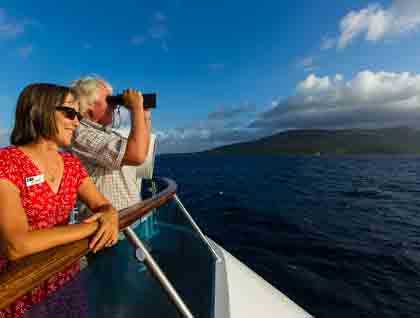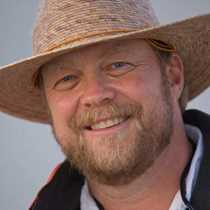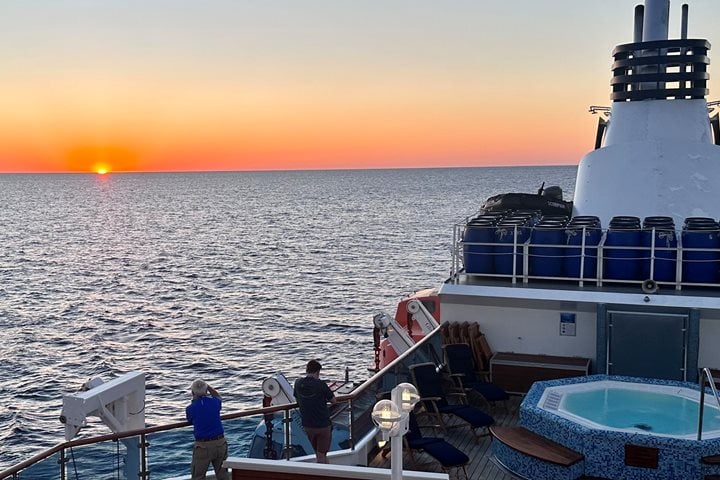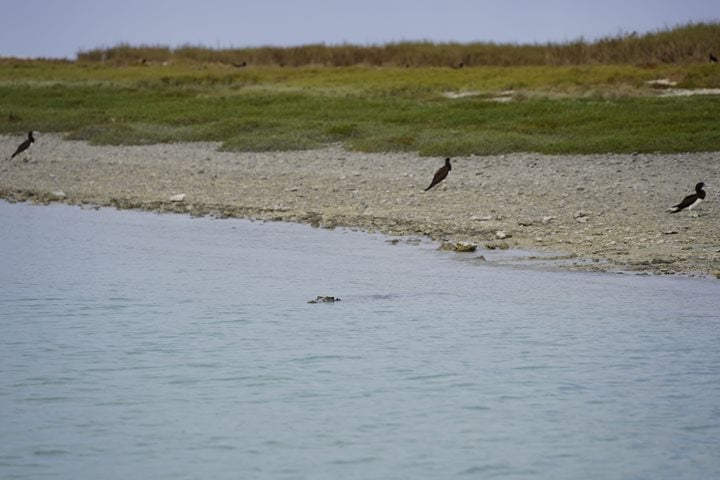Making our way through the Timor Sea, which separates northern Australia from the island of Timor, we are about nine degrees south of the Equator. The western portion of Timor is part of Indonesia, the eastern portion is the main part of the country of Timor-Leste, or East Timor, our destination. Conditions are good, with following seas and a nice breeze which moderates the tropical heat. We cover 346 nautical miles, at a speed of about thirteen knots, between Darwin and Com. By late afternoon the densely vegetated island comes into view and at 6:20 p.m., as we are on final approach to our anchorage off of Com, the sun slides below the horizon. A sliver of a moon shines above.
Flying fish live in tropical and subtropical oceans around the world. Technically gliders rather than fliers, these fish propel themselves out of the water by wagging their powerful tails then spreading their highly modified pectoral fins once they emerge into the air. The fish can adjust their course to take advantage of wind currents, including minute currents above the ocean swells. They can glide almost a half of a kilometer, or about a quarter of a mile. This unusual adaptation is a defense mechanism to escape predators. National Geographic Orion surely appears to them as a giant predator, thus our sightings throughout the day. In addition to people (flying fish are a popular food in many regions), flying fish are preyed upon by porpoises, dolphins, and a variety of fish and sea birds.
The Lindblad-National Geographic presentation series comes into full swing today. Natural Geographic expert David Wright screens his documentary “Invasion of the Crocodile.” Ralph Lee Hopkins, our photo instructor presents “An Introduction to Digital Photography” which is followed by a breakout session in which Ralph and the rest of our photo team sit down with guests and their cameras looking at settings and other features and explaining what they mean and how to use them. Cristiana Damiano’s “An Introduction to the Kimberley” provides us with a natural history overview of this region, and Harry Christensen shares “Spirits in the Clouds,” preparing us for our visit to the Wandjina Rock Art gallery which we will visit in a few days. Lively discussions follow each of the presentations.
As always, a fine dinner is followed by Glenn’s entertainment as we wind down a fine day and look to tomorrow’s adventures.









